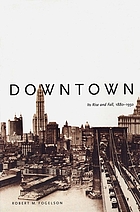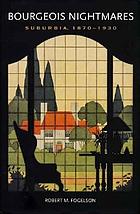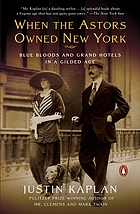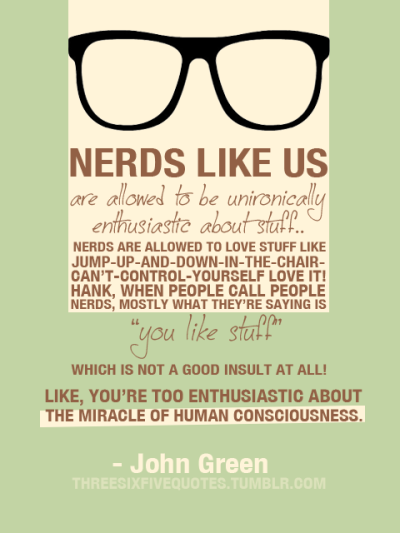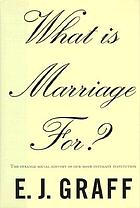See
part one and
part two for the context of this post.
So having explored fan fiction generally (and why I'm drawn to it) and erotic fan fiction as a sub-genre of fic, and why I think it's important, I thought I'd round this little series out with some thoughts on what draws me to the particular fandoms and pairings (relationships) I write ... and what I'm trying to do when I write them. Besides, you know, enjoy the smut. I'm also going to address, below, a couple of questions I've fielded lately about the ethics of fic-writing practice.
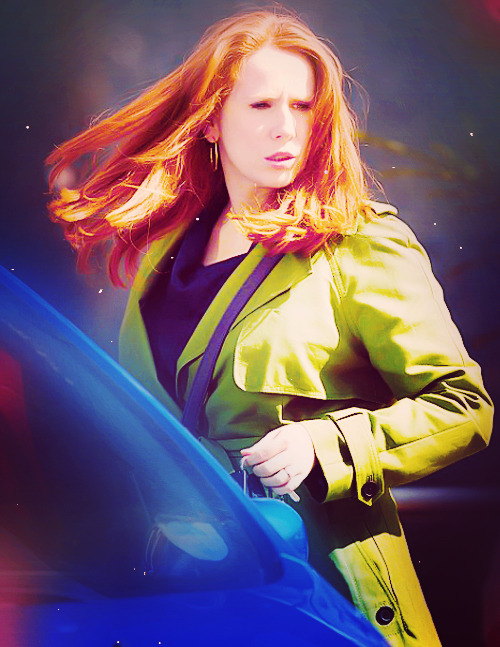 |
| Donna Noble (Doctor Who)* |
Why write the pairings I write?
Well, so, it's tempting to say that I write the things I write because I find them compelling and I just
do, okay? On a certain level, trying to
explain why you find the the fiction you like compelling is like trying to explain why you love your partner. It's not really reducible to a bullet point list.
But on the other hand, I'm me. So of course I have some Thoughts on the subject. And it starts with the fact that I consumed a lot of erotic fan fiction at a point where I was beginning to actively think about relational sexuality and how sexual identity and desire
worked in peoples' lives (see
post two). And I really enjoyed a lot of fan fic I was reading, mostly gay male pairings 'cause those were the fandoms Hanna and I were reading, but I struggled to find sexually-explicit
lesbian pairings. And the femslash I did come across was frustratingly in-explicit about sex, or written by people who didn't seem to fully grasp the possibilities of what two female-bodied people might do together, sexual-intimacy wise. Hetero and gay male sex scenes in fic (and, to be fair, in a lot of regular porn) work on a fairly standard narrative arc that culminates in penetrative sex -- penis-in-vagina or anal sex -- as The Most Bestest Form of Sexual Intimacy. It's pretty much always orgasm-producing for both partners and sometimes it's clear the authors (and the characters they're writing) don't consider sex to have happened
until there's been a penis inside a vagina or an anus.
Without a penis, what do you do?! Okay, yes, there are dildos and vibrators, but honestly not a lot of fics wade into the territory of sex toys very skillfully, and dildos in a lesbian sex scene too often just cue the author to assume sex with a dildo is about role playing het sex. Which it can be, but certainly doesn't
have to be. In my opinion, it's much more fun to start without that penetrative-sex-as-goal model in mind and think about all the ways two bodies might come together (double entendre very much intended).
 |
| Idris - the TARDIS personified (Doctor Who)* |
So I developed a (Queer, Feminist) Agenda. Which was to inject the world with realistic smut about ladybits. Smut that was tactile, visceral, about real bodies coming together and people making meaning out of the sex they were engaged in. And I'm an historian, so I started out pilfering from
Downton Abbey, writing
an eight-story arc about Sybil Crawley and Gwen. And I went on from there to other female pairings and eventually stuck my toe into the waters of m/m slash. It was kind of terrifying at first, pushing out into writing about men having sex -- something I don't have hands-on experience with. But I discovered that, at least the way I go about it, the characters take hold of the narrative regardless of gender and help me feel my way through giving them positive (and I hope realistic) sexual experiences! And in part, I was motivated by the same (Queer, Feminist) Agenda as I had been with writing female-bodied sex scenes: the be-all and end-all of sex for guys doesn't have to be penetration.
I'm
hardly the
first person to observe this, but for people who are queer in some way, writing slash fiction can be a way to revise the heteronormative narratives of mainstream media. And, I'd add as a feminist, it can be a way to revise sexism and other isms as well. Watching a television show with primarily straight relationships and re-writing or filling in those stories to imagine queer relationships injects
our experience into the cultural discourse. Characters on television, in film, in books, are assumed straight until explicitly identified as queer; fan fiction more often assumes that everyone is a little bit queer unless they're proven to be straight. It's a re-visioning of the world in which sexual variety is the norm -- one part reflection of our actual experiences in queer subcultures, and one part wishful "what if..." thinking. Looking at my small repertoire of fic pairings, I'd argue I tend to choose characters who have the potential to -- when queered in some way -- disrupt the normative expectations about sex and relationships that we see in a lot of porn, erotica, and mainstream media -- television shows, movies, etc., the original material from which fan fiction is born. Perhaps starting out as a critique of the original material, I often find my acts of fanfic subversion increases my pleasure as a consumer of the original material.
I enjoy writing stories about women unabashedly enjoying sex and knowing their bodies. I enjoy writing stories about elder folk, late-in-life lesbianism, about people having sex when their bodies don't always work the way they want them to. I like writing fic in which it's taken for granted (by me, the author, at least) that men can, and do, enjoy a full range of emotional intimacy, body insecurities, carry baggage from damaging relationships, enjoy sex that isn't always fucking. (In fact, I have yet to write a fic that includes men having anal sex.) I like writing the vulnerability of desire, about what it means to expose to another person just how much you
want, and (often even more frightening)
what you want. I like writing sex that includes awkward conversations and misunderstandings and bodies that frustrate and fears that overwhelm -- but that all ultimately circle around that moment of knowing and being known that can come when people get naked together, in every sense of the word.
The ethics of slash: a few final thoughts.
Aside from the ethics of porn, which is a topic about which much ink (and internet bile) has been spilled, the ethics of fan fiction (or, more generally, "transformative works") is itself a topic for discussion on the internet and beyond. Hanna and I belong to the
Organization of Transformative Works, a non-profit organization that advocates for the practice of fan works and also runs the
Archive of Our Own project, which seeks to collect and preserve fan works online. They publish a peer-reviewed journal,
Transformative Works and Cultures, that explores fandom in its infinite varieties. So if you're interest is piqued and you'd like to delve into the politics and culture of fan creation -- or poke around and read some fic or whatever variety! -- I really can't recommend them highly enough.
What I wanted to do here is touch on a couple of ethical issues that have come up recently in conversation with friends -- namely the ethics of "m/m erotica" written by women, and the practice of writing RPF or "real person" fic.
Can, or should, women write erotica about gay men?
Periodically, there are internet-based wrangles over whether or not "m/m erotica" -- which in the world of published romance/erotica generally means "gay porn for girls," or (usually) women-authored fiction about gay male relationships marketed to a (presumed straight) female readership -- is ethical (see for example
here and
here). The question is whether the m/m genre is exploitative, a hetero appropriation of gay male culture. The practice of writing erotic fan fiction is overwhelmingly a female one, and male/male pairings -- as I write above -- generate an incredible amount of enthusiasm, from both writers and readers (who appear to be, again, overwhelmingly female).
As an aside: fan-fiction writing
as a feminized activity is something that deserves attention, and I have no doubt someone somewhere is doing incredible work on it. I think there's a lot to explore in that dynamic -- and I'm looking forward to being a part of the conversation, along with people who've done way more research than I into the phenomenon.
But back to the ethics of being a woman writing/reading porn involving men having sex with other men. Which is something I, a cis woman, do on a near-daily basis (see above). I admit that, when the articles about m/m erotica appeared, I did some soul-searching about it. When people suggest an activity might be exploitative it's pretty much always a good idea to take their position seriously and listen to what they have to say. But. Here's my thing about the case against m/m erotica: it basically comes down to an argument that if people of sexual identity A create or consume erotica about (fictional) people of sexual identity B, particularly if there's a dynamic of social privilege in the mix, that's
per se a problem.
But sexual identity isn't some sort of siloed, static thing -- or at least
I don't experience it that way. Our sexual identities, desires, practices -- they're messy and complicated and shift over time. Preferred sex and/or gender of one's actual partners aside, we can have fantasies and enjoy porn about practices we would
never want to actually engage in. And, I would argue, we can find porn about bodies and practices we don't
per se find arousing, arousing because so much of sex isn't the geometry of bodies coming together but (see
post two) the narrative surrounding that context. Recent research is beginning to support this notion, particularly for female-bodied persons. As J. Jack Halberstam points out in the recent book
Gaga Feminism (Beacon Press, 2012):
People are not asking why it is that gay men do not, generally speaking, produce any [sexual] fantasies around femininity, while lesbians produce lots of fantasy environments that include men or masculinity. When, in The Kids Are All Right, the lesbian couple watches gay male pornography to spice up their sex life, the scene was met with incredulity, especially from gay men. Indeed, a gay magazine journalist called me and asked me to comment on this bizarre (to him) scene. I responded that lots of lesbians watch and like gay male porn, straight male porn, and everything in between ... [According to sexual response studies] while men, gay and straight, tend to respond in inflexible ways to erotic images of men and women (straight men want to see female bodies, gay men want to see male bodies), women, gay and straight, tend to respond in flexible ways to images of men, women, and animals. (p. 87-88).
So my point is that what
sounds like a fairly reasonable call for non-appropriation ("what do these straight women think they're doing, fantasizing about gay men!") becomes tangled really quickly.
To use my own example: I'm a bisexual woman in a same-sex relationship with another woman. Does that mean I'm only "allowed" to be involved in reading/writing porn featuring two women? Are threesomes okay -- or not, because I'm not in an open or poly relationship? If I write about sex involving male bodies, is it okay because as a bi woman I'm sexually attracted to men? But then it would be okay for straight women to write gay porn also, so maybe I'm only allowed to write porn about hetero pairings? But I've never been
in a straight relationship, and identify as part of the queer community -- so maybe that's off-limits as well. But if I'm part of the queer community then we're back where we started: maybe I get to create and consume porn about same-sex couples because I'm
part of a same-sex couple?
So you end up on this merry-go-round of factors that could be used to determine who is or isn't "qualified" or ethically able to create certain types of sexual fictions. And I think that that sort of policing ultimately impoverishes us all. If we started saying that straight people could
only write or enjoy porn about straight folks, and gay men and lesbians could
only write or enjoy porn about gay men and lesbians ... not only would we miss out exploring the sexual diversity of humanity through the imaginative act of writing and reading, but we'd also be ignoring that there are people who don't fit into these neat and tidy categories of the self.
I'm not saying there isn't a place for critique. Hell, in my book, there's nothing in the world so sacrosanct as to be beyond critique. And I absolutely believe that there is porn out there that fetishizes queerness for the straight gaze. I mean, I wouldn't be writing porn in the first place if I hadn't gotten frustrated with the conventions and stereotypes I saw being recapitulated over and over in the porn I was reading. So I think anyone involved in writing erotica should be open to conversation about their work, open to hearing people say, "Hey, that thing you did there in that story rubbed me the wrong way, and here's why." It's not a requirement to engage, but I would hope the resulting conversation could be an opportunity for growth for all involved.
What are my feelings on "real person" erotic fan fiction?
Yup, it's a thing in the world, people writing (often erotic) fan fiction featuring real-life celebrities. Often, though not always, these celebrities are the actors portraying the characters that these same authors write other fan fiction pieces about. But there are also people who write erotic fan fiction about politicians, musicians, and other people in the public eye.
I had a follower on Twitter ask me last week what I think about the practice:
I responded:
And I'm not sure I have a whole lot more to add to this "short answer" response. Characters (whether portrayed by actors or written about in a text) are
characters not human beings. We joke about how they take over our brains and insist their own version of events, but at the end of the day they are human creations -- not humans themselves. They have no independent bodily autonomy or agency. They have no legal or social standing as persons.
Real people do.
Real people can create erotica or pornography that involves themselves and offer it to others (friends or strangers) to enjoy consuming -- as long as everyone's staying safe and is able to consent without coercion I'm down with that. I even think teenagers technically under the age of consent should have the protected right to create erotica materials involving themselves and share those materials with their peers as part of their own sexual exploration. Obviously this raises questions about how to give them a safe space to explore their sexuality without being exploited, and I agree that's a conversation to be had. But the general principle is: we should all have the creative license to explore our sexuality in textual and visual ways and share it as we desire.
However: consent is key here. I imagine human beings have always developed fantasies around other actual people prior to full and enthusiastic consent being given -- in the case of those we later become sexually intimate with -- or in situations where those relationships will never flower, but we're crushing hard anyway. This isn't about policing personal imagination -- have all the damn fantasies you want about whomever and whatever you find turns you on.
I'd argue, though, that in the case of fantasies about real live actual people who aren't involved in the spinning out of those fantasies? Those stories or images are best left in
private spaces: your computer hard-drive, your journal, whatever. I'm not thinking so much of regulation here -- I'm not arguing we pull RPF from the Archive and ban people from publishing more -- but I'm arguing that as a matter of common courtesy it's kinda, well,
rude, to put your fantasies about actual people who you have no relationship with and who aren't consenting to have these sexualized stories or images created around them out into the world of the 'net where those same people could presumably come across said stories by Googling their names.
If someone wrote an erotica story -- even a really sweet hot one! -- about me
as me and posted it online and I stumbled across it, it would feel really stalkery and invasive to me. Like, my wife is the only one at this point in time who has my permission to spin out stories about my bits that way.
So yes, I
do think there are boundaries and ethical considerations where fan-creation is concerned. And I appreciate that there are people within fandom who are willing and interested in engaging in ongoing conversations about those difficult aspects of the genre. What I
do hope is that those outside of the genre will think twice before dismissing the practice wholesale as facile or perverted (in the not-cool way). Because I think fan engagement with (mainstream) creative works has a lot of potential to change and complicate the (mainstream) conversation about human sexuality.
*One of the pieces of fan fiction I'm most proud of is
a Donna Noble/Idris fic completed for last year's International Day of Femslash.

